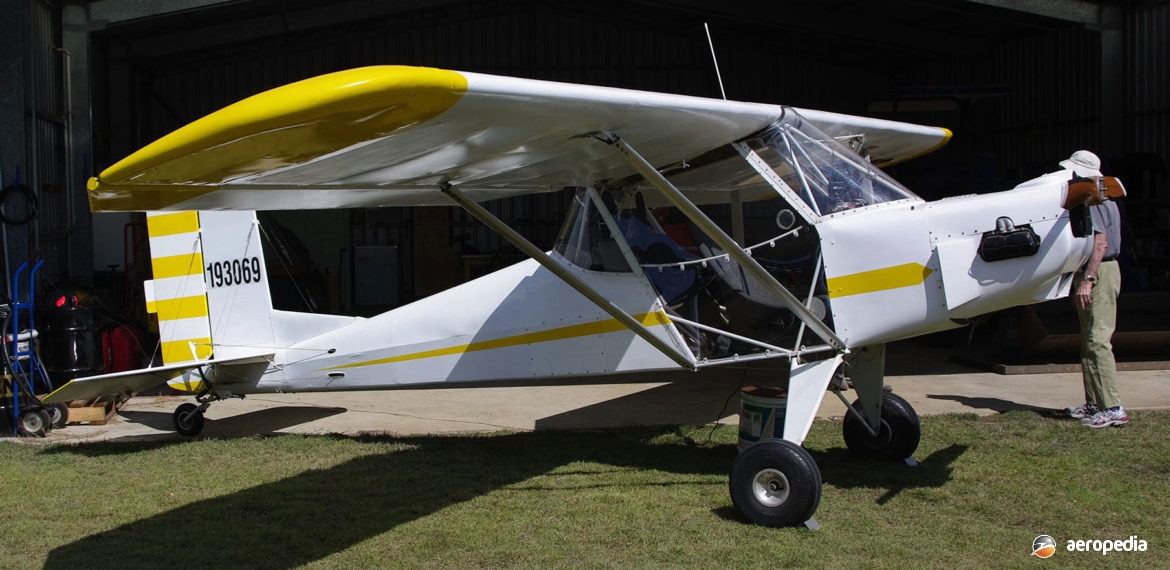Photograph:
Hughes PR Breeze 19-3069 (c/n 006) at Watts Bridge, QLD (David C Eyre)
Country of origin:
Australia
Description:
(Bipe) Two-seat aerobatic biplane
(Breeze) Single-seat light sport aircraft
Power Plant:
One 60 kw (80 hp) Jabiru 2200 four-cylinder horizontally-opposed air-cooled engine
Specifications:
- (Breeze)
- Wingspan: 7.3 m (23 ft 11 in)
- Length: 5.6 m (18 ft 3 in)
- Wing area: 13.47 m² (145 sq ft)
- Cruising speed: 139 km/h (89 mph)
- Stalling speed: 74 km/h (46 mph)
- Fuel capacity: 80 litres (17.6 Imp gals)
- Loaded weight: 300 kg (661 lb)
History:
The Hughes PR Breeze was a single-seat variant of the PR-582 Pocket Rocket using the basic Lightwing fuselage, but fitting it with a single parasol configuration wing and installing a range of Rotax engines, including the Models 503, 582 or 618 two-strokes units, or the Rotax 912 four-stroke unit. The Breeze was designed for production to be marketed in kit form, being a fast, short-field performance sport type aircraft. The fuselage was constructed of welded steel tube with fabric covering.
The Bipe was a two-seat aerobatic biplane built in kit form by Hughes Engineering at Ballina, NSW, the first kit being completed and flown at Cessnock, NSW on 10 July 2004. The second seat could carry up to an 85 kg (127 lb) person or baggage, and the aircraft was able to perform positive G aerobatics, the aircraft being rated for aerobatics by the manufacturer to +6G and -4G, and being approved for +G. This machine was fitted with a Jabiru 2200 cc four-cylinder engine. It could be fitted with an enclosed cockpit or built with an open cockpit.
As with most aircraft models produced by Hughes Aircraft, the two variants were also available in Quick-build form, and could be registered under Recreational Aviation Australia (RAA) or general aviation experimental regulations.
Examples registered included 10-1248² (c/n 075), 10-3069 (c/n 006 – later 19-3069), and 28-0915 (also c/n 075) which was a Pocket Rocket PR-XP.

